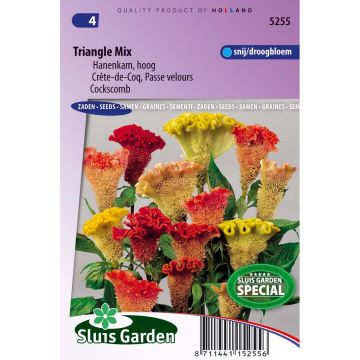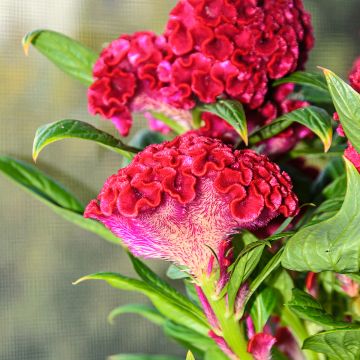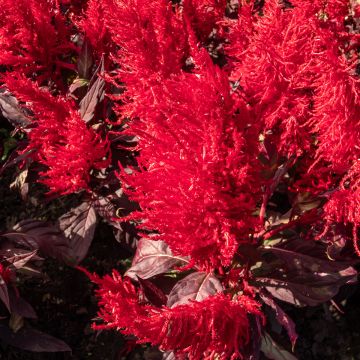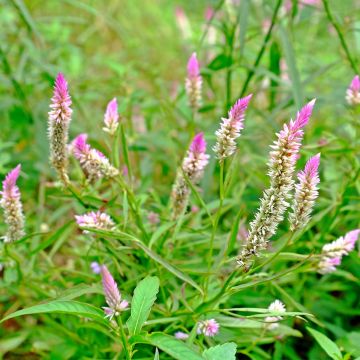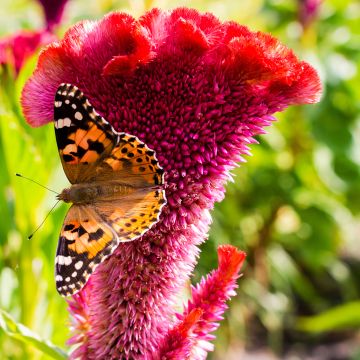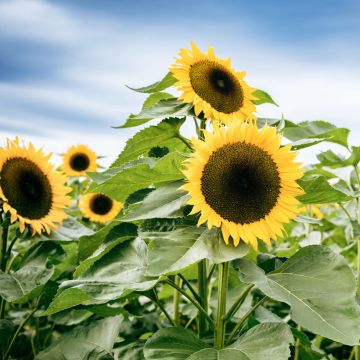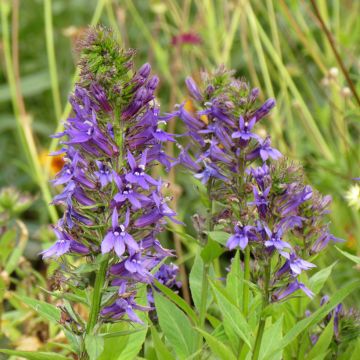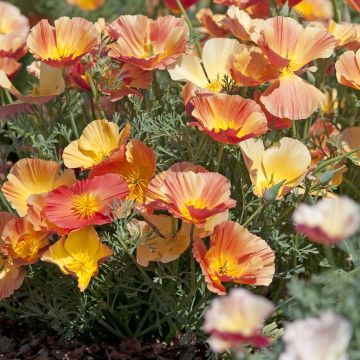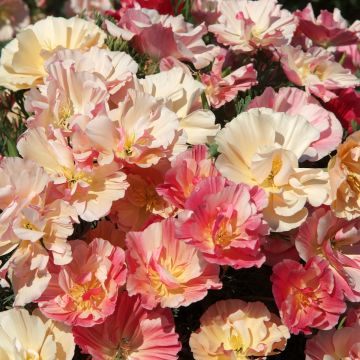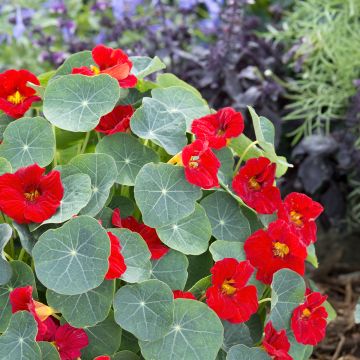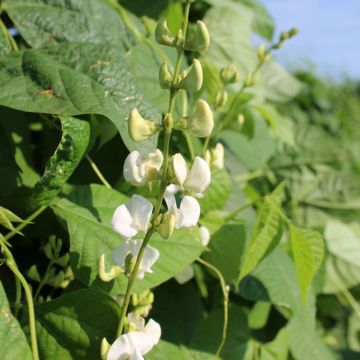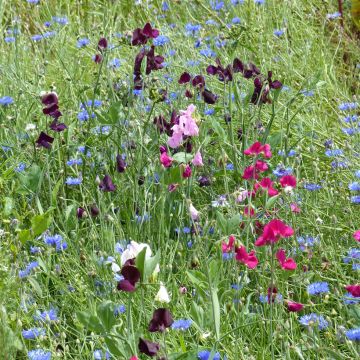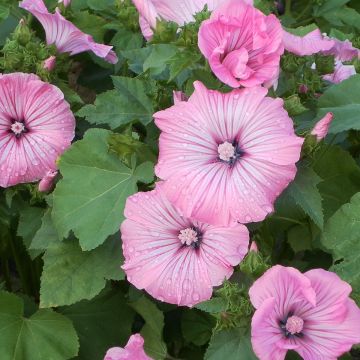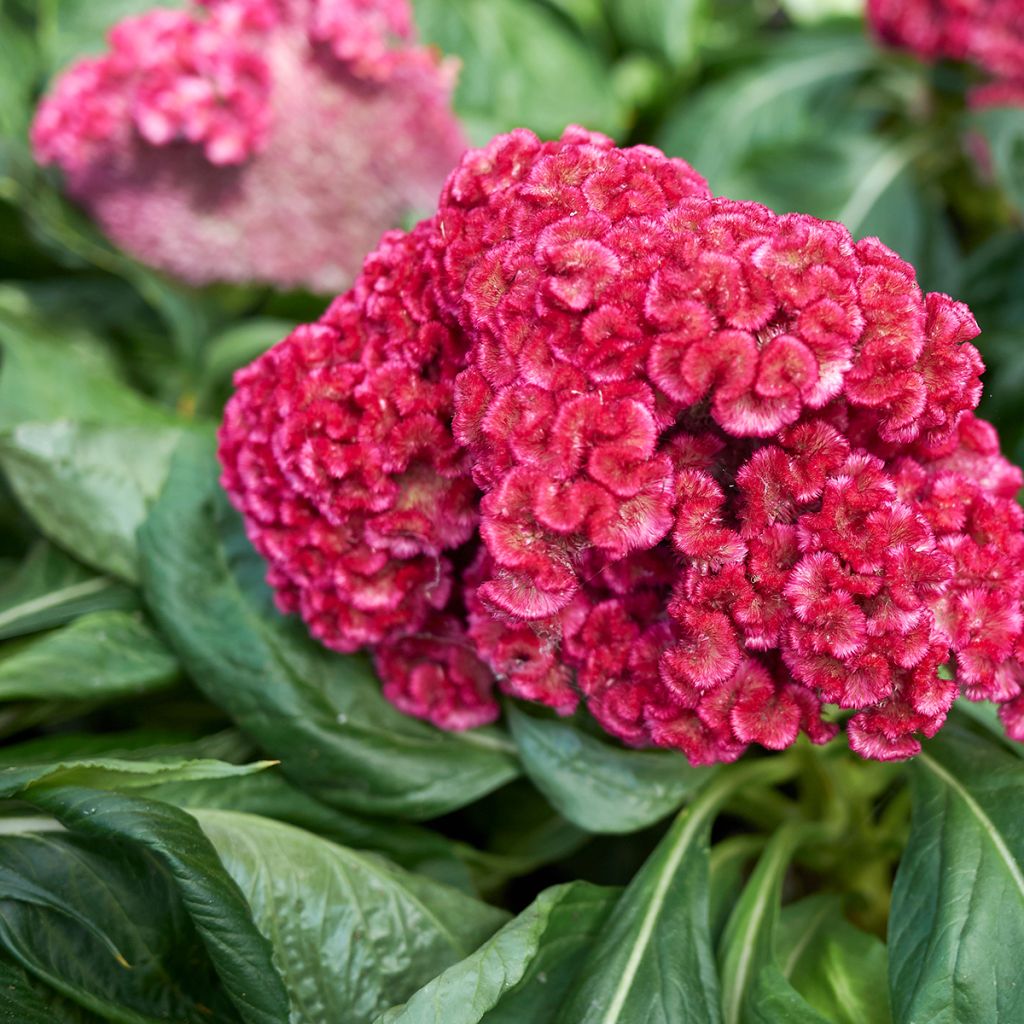

Celosia cristata King Coral - Crested Cock's-comb
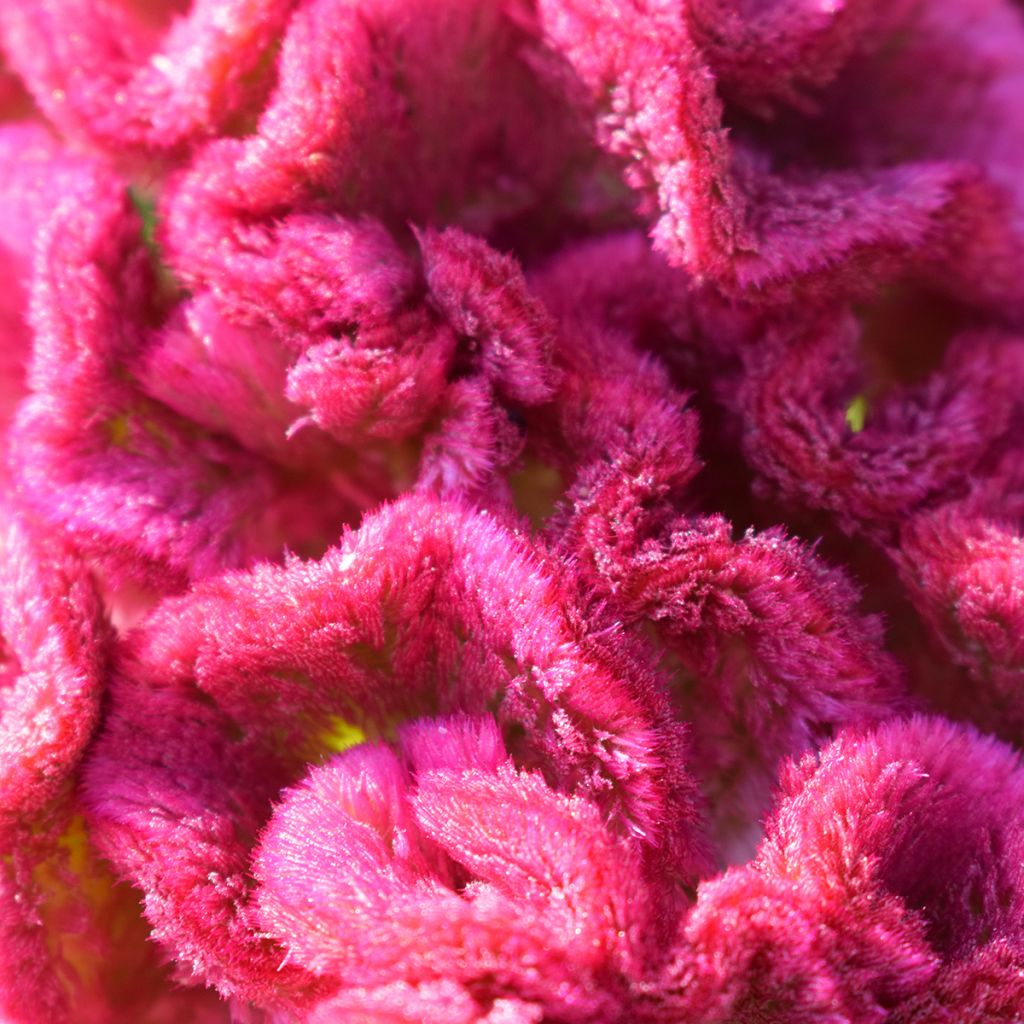

Celosia cristata King Coral - Crested Cock's-comb
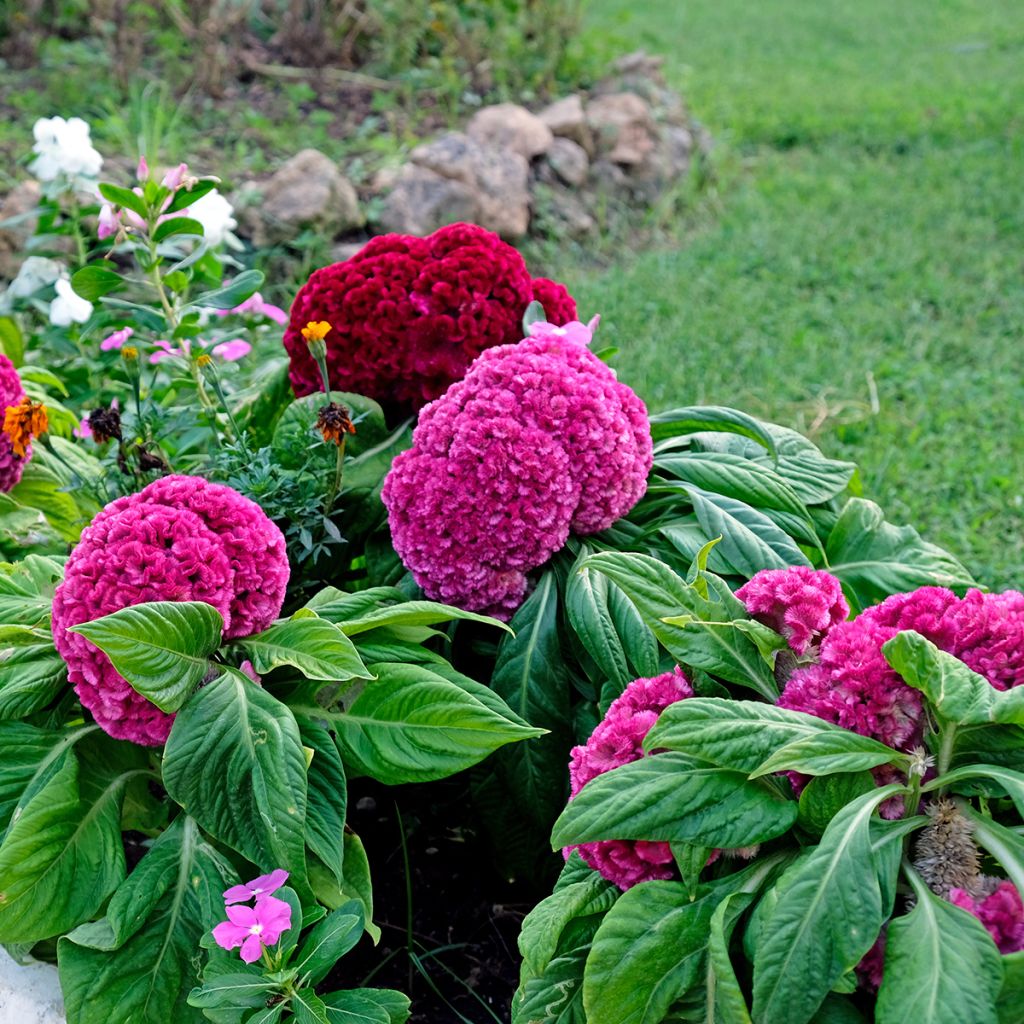

Celosia cristata King Coral - Crested Cock's-comb
Celosia cristata King Coral - Crested Cock's-comb
Celosia cristata King Coral
Crested Cock's-comb
Order in the next for dispatch today!
Dispatch by letter from €3.90.
Delivery charge from €5.90 Oversize package delivery charge from €6.90.
Current delivery delay: 1 day.
More information
This item is not available in your country.
Schedule delivery date,
and select date in basket
This plant carries a 6 months recovery warranty
More information
We guarantee the quality of our plants for a full growing cycle, and will replace at our expense any plant that fails to recover under normal climatic and planting conditions.
Seed-only orders are dispatched by sealed envelope. The delivery charge for seed-only orders is €3.90.
Does this plant fit my garden?
Set up your Plantfit profile →
Description
Celosia cristata or Celosia King Coral displays large and gigantic rounded flowers, measuring up to 30 cm (12in) in diameter. This cockscomb is an annual plant native to tropical areas of the planet. It stands out in the garden with its vibrant coral pink colour, associated with its velvety texture and unconventional shape. Its characteristic flowering, made up of curious inflorescences with an unreal texture, lasts a long time and does not fade, even when dried. It carries its extravagant flower for flower beds and bouquets. Easy to grow in the sun, in well-drained and moist soil.
Native to tropical and temperate regions of America and Asia, Celosia argentea ssp. cristata is an annual herbaceous plant of the Amaranthaceae family. It is cultivated for ornamental purposes, due to its unusual inflorescences resembling undulating crests, which earned it its vernacular name of Cockscomb. It is actually a short-lived frost-tender perennial. It appreciates warmth as well as rich, moist, but well-drained soils.
This compact variety of Celosia, King Coral, reaches a height of 15 to 20 cm (6 to 8in) and a width of 20 to 30 cm (8 to 12in). Its astonishing flowering takes place in summer, from July to September, or even until the first frost depending on the sowing date. The plant develops a single, more or less branched, channelled stem, with long triangular leaves, pointed at the tip, smooth, light green or sometimes tinged with red to violet. At the top of the stem, a compact, undulating or plicate inflorescence develops, often with a velvety appearance. It consists of tiny petal-less flowers, with coloured bracts. Each inflorescence can live up to 8 weeks. After pollination by pollinating insects, seeds form and easily germinate in light soil.
Cockscombs are dramatic flowers, with a dramatic temperament that is expressed without restraint in bouquets or in the heart of perennial flower beds. They enhance the simple flowering of field daisies, accompany the blue stars of Asters or the delicate flowers of Cosmos. These plants make an impact when planted in groups of 3 to 5 subjects with a carpet of ground cover plants like Cerastostima plumbaginoides, Artemisia Powis Castle or Stachys. In a vase, do not put too much water and change it frequently to prevent stem rot.
Report an error about the product description
Celosia cristata King Coral - Crested Cock's-comb in pictures
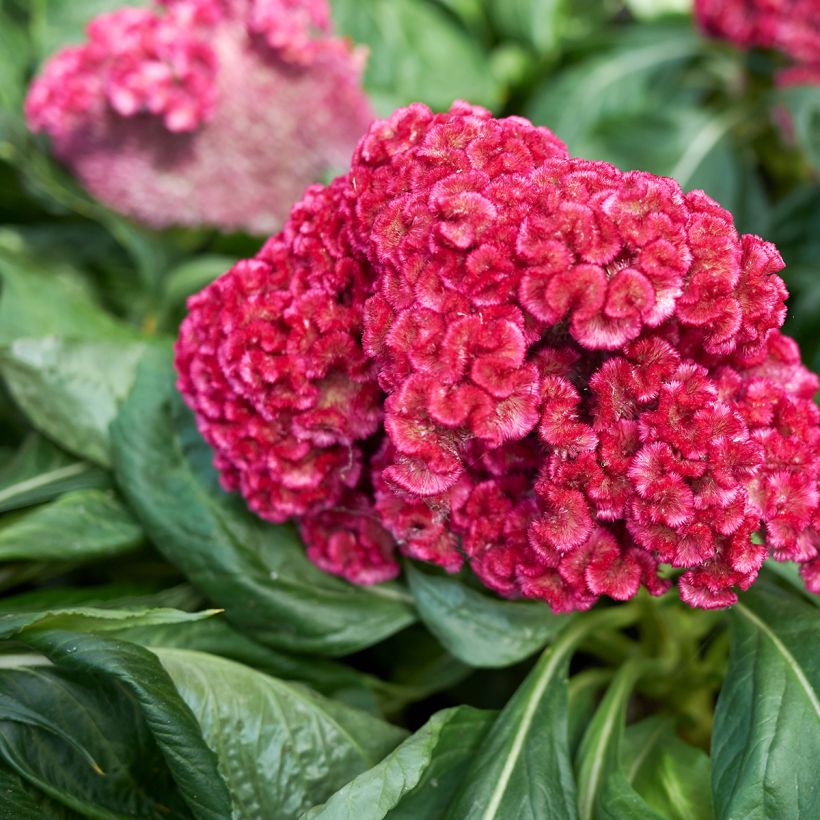

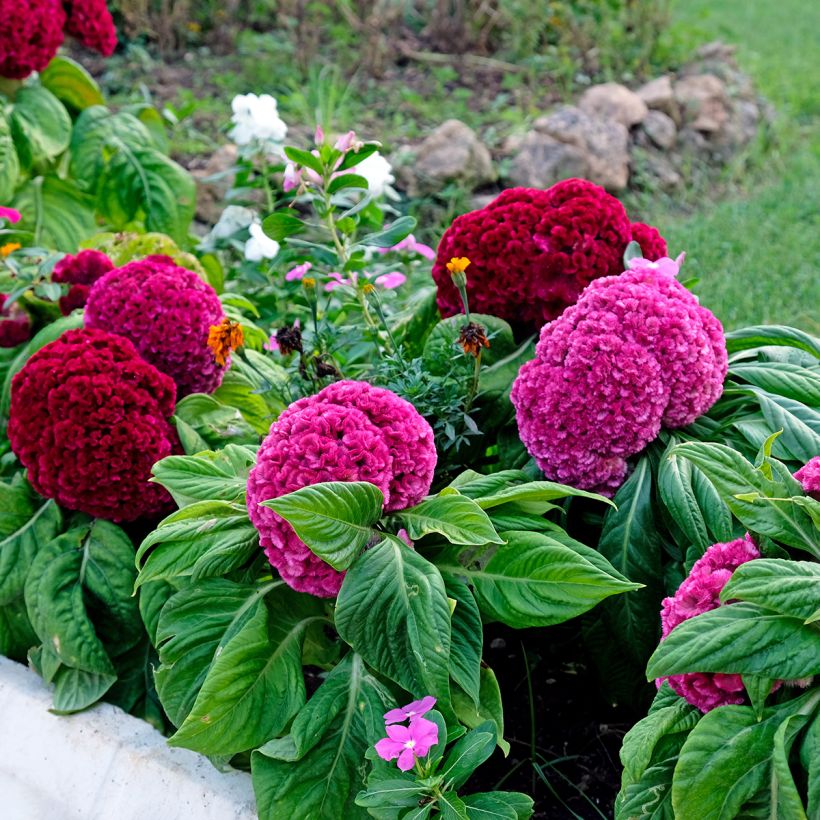

Flowering
Foliage
Plant habit
Botanical data
Celosia
cristata
King Coral
Amarantaceae
Crested Cock's-comb
Cultivar or hybrid
Other Graines de Célosie - Celosia
Planting and care
Sow Celosia from February to April in a seed tray. Use good quality compost. Broadcast sow your seeds. Cover the seeds by sprinkling compost on top or using vermiculite, lightly press down and water generously with a fine spray. Place your seed tray in light, without direct sunlight, at a temperature of 24 to 27°C (75.2 to 80.6°F).
The seeds will germinate in 14 to 21 days. Once the plants have reached a height of 5 cm (2in), transplant them into pots. 15 days before their final placement, start gradually acclimatizing them to a temperature of 15°C (59°F).
By the end of May or early June, the temperature will be warm enough in the garden to plant your young plants. Choose a sunny location. Add a good potful of compost to each planting hole. Space your plants 25 cm (10in) apart.
Sowing period
Intended location
This item has not been reviewed yet - be the first to leave a review about it.
Flower seeds
Haven't found what you were looking for?
Hardiness is the lowest winter temperature a plant can endure without suffering serious damage or even dying. However, hardiness is affected by location (a sheltered area, such as a patio), protection (winter cover) and soil type (hardiness is improved by well-drained soil).

Photo Sharing Terms & Conditions
In order to encourage gardeners to interact and share their experiences, Promesse de fleurs offers various media enabling content to be uploaded onto its Site - in particular via the ‘Photo sharing’ module.
The User agrees to refrain from:
- Posting any content that is illegal, prejudicial, insulting, racist, inciteful to hatred, revisionist, contrary to public decency, that infringes on privacy or on the privacy rights of third parties, in particular the publicity rights of persons and goods, intellectual property rights, or the right to privacy.
- Submitting content on behalf of a third party;
- Impersonate the identity of a third party and/or publish any personal information about a third party;
In general, the User undertakes to refrain from any unethical behaviour.
All Content (in particular text, comments, files, images, photos, videos, creative works, etc.), which may be subject to property or intellectual property rights, image or other private rights, shall remain the property of the User, subject to the limited rights granted by the terms of the licence granted by Promesse de fleurs as stated below. Users are at liberty to publish or not to publish such Content on the Site, notably via the ‘Photo Sharing’ facility, and accept that this Content shall be made public and freely accessible, notably on the Internet.
Users further acknowledge, undertake to have ,and guarantee that they hold all necessary rights and permissions to publish such material on the Site, in particular with regard to the legislation in force pertaining to any privacy, property, intellectual property, image, or contractual rights, or rights of any other nature. By publishing such Content on the Site, Users acknowledge accepting full liability as publishers of the Content within the meaning of the law, and grant Promesse de fleurs, free of charge, an inclusive, worldwide licence for the said Content for the entire duration of its publication, including all reproduction, representation, up/downloading, displaying, performing, transmission, and storage rights.
Users also grant permission for their name to be linked to the Content and accept that this link may not always be made available.
By engaging in posting material, Users consent to their Content becoming automatically accessible on the Internet, in particular on other sites and/or blogs and/or web pages of the Promesse de fleurs site, including in particular social pages and the Promesse de fleurs catalogue.
Users may secure the removal of entrusted content free of charge by issuing a simple request via our contact form.
The flowering period indicated on our website applies to countries and regions located in USDA zone 8 (France, the United Kingdom, Ireland, the Netherlands, etc.)
It will vary according to where you live:
- In zones 9 to 10 (Italy, Spain, Greece, etc.), flowering will occur about 2 to 4 weeks earlier.
- In zones 6 to 7 (Germany, Poland, Slovenia, and lower mountainous regions), flowering will be delayed by 2 to 3 weeks.
- In zone 5 (Central Europe, Scandinavia), blooming will be delayed by 3 to 5 weeks.
In temperate climates, pruning of spring-flowering shrubs (forsythia, spireas, etc.) should be done just after flowering.
Pruning of summer-flowering shrubs (Indian Lilac, Perovskia, etc.) can be done in winter or spring.
In cold regions as well as with frost-sensitive plants, avoid pruning too early when severe frosts may still occur.
The planting period indicated on our website applies to countries and regions located in USDA zone 8 (France, United Kingdom, Ireland, Netherlands).
It will vary according to where you live:
- In Mediterranean zones (Marseille, Madrid, Milan, etc.), autumn and winter are the best planting periods.
- In continental zones (Strasbourg, Munich, Vienna, etc.), delay planting by 2 to 3 weeks in spring and bring it forward by 2 to 4 weeks in autumn.
- In mountainous regions (the Alps, Pyrenees, Carpathians, etc.), it is best to plant in late spring (May-June) or late summer (August-September).
The harvesting period indicated on our website applies to countries and regions in USDA zone 8 (France, England, Ireland, the Netherlands).
In colder areas (Scandinavia, Poland, Austria...) fruit and vegetable harvests are likely to be delayed by 3-4 weeks.
In warmer areas (Italy, Spain, Greece, etc.), harvesting will probably take place earlier, depending on weather conditions.
The sowing periods indicated on our website apply to countries and regions within USDA Zone 8 (France, UK, Ireland, Netherlands).
In colder areas (Scandinavia, Poland, Austria...), delay any outdoor sowing by 3-4 weeks, or sow under glass.
In warmer climes (Italy, Spain, Greece, etc.), bring outdoor sowing forward by a few weeks.


































